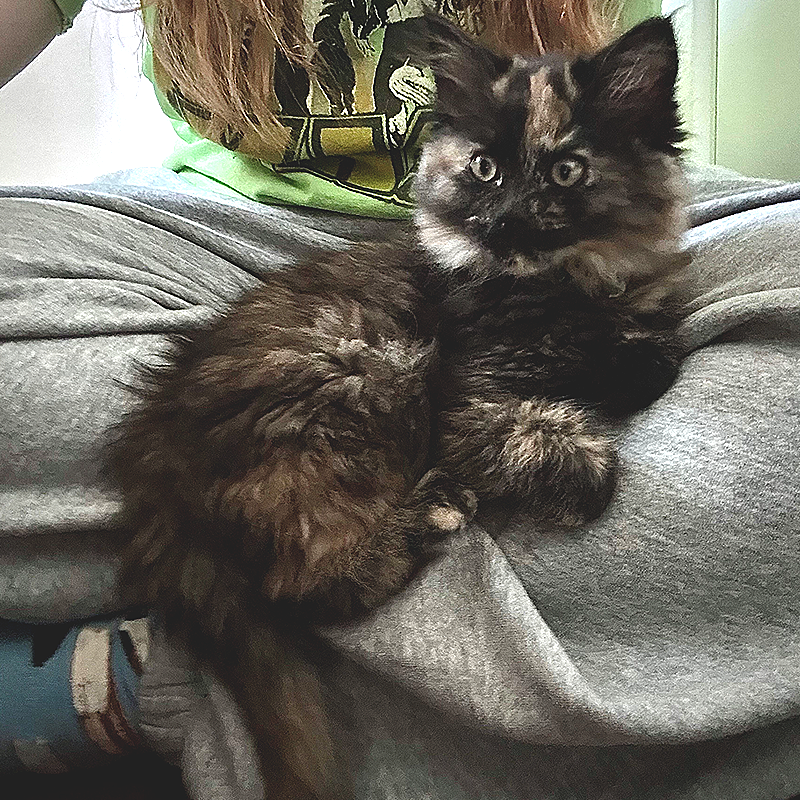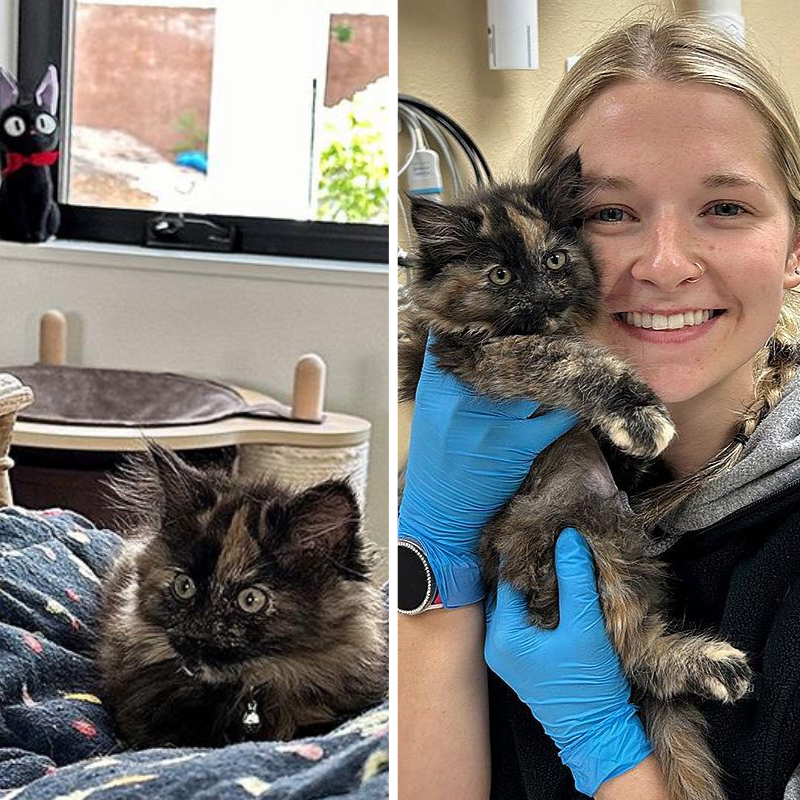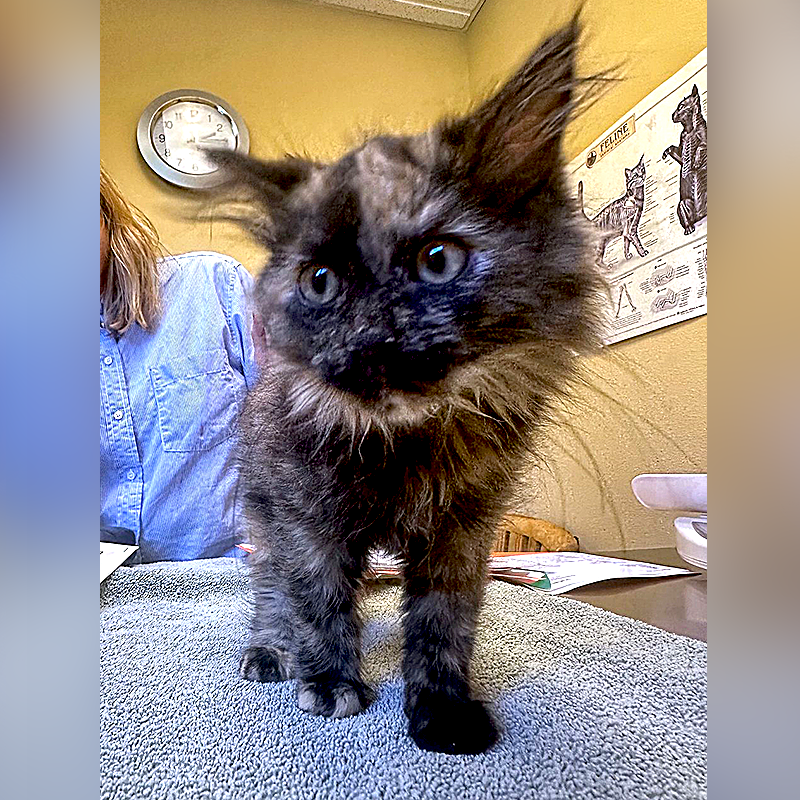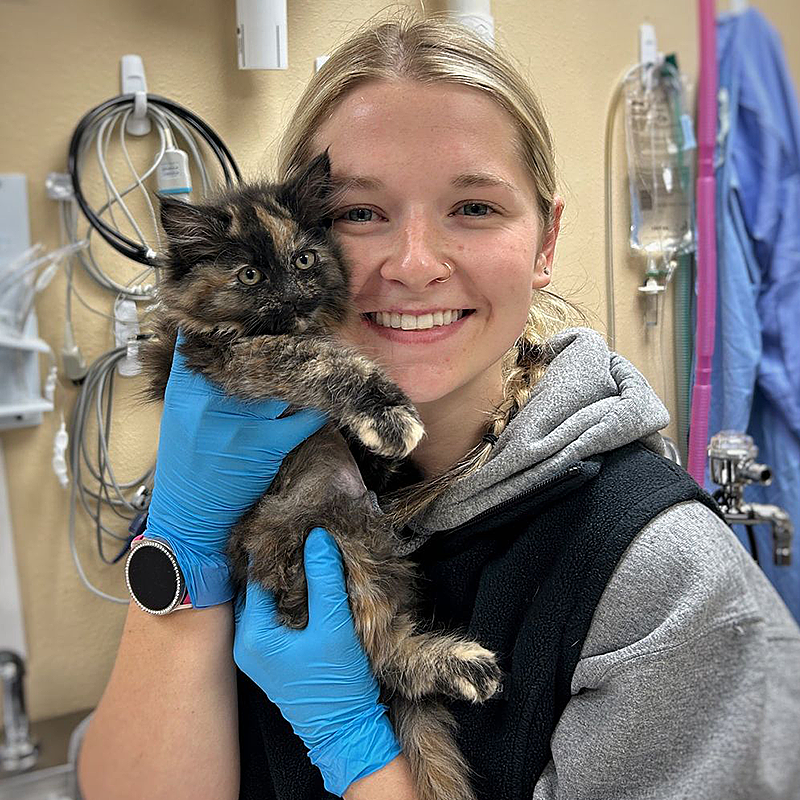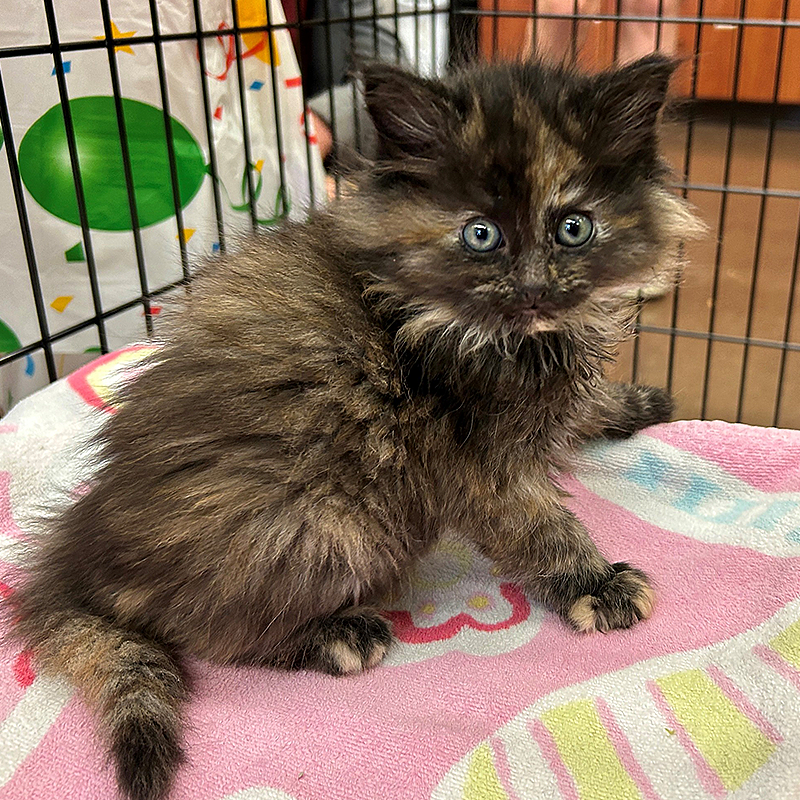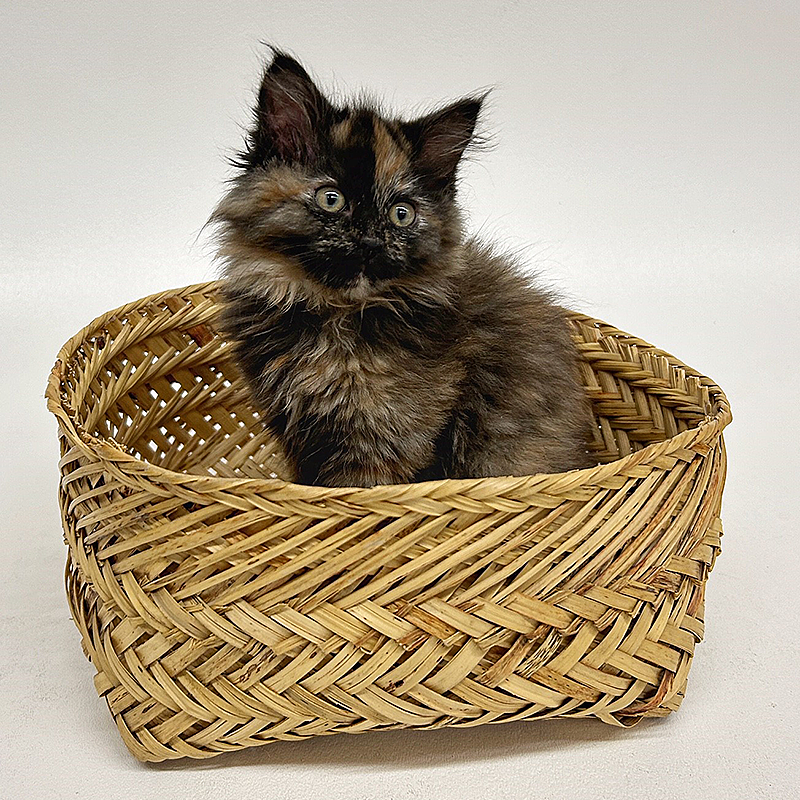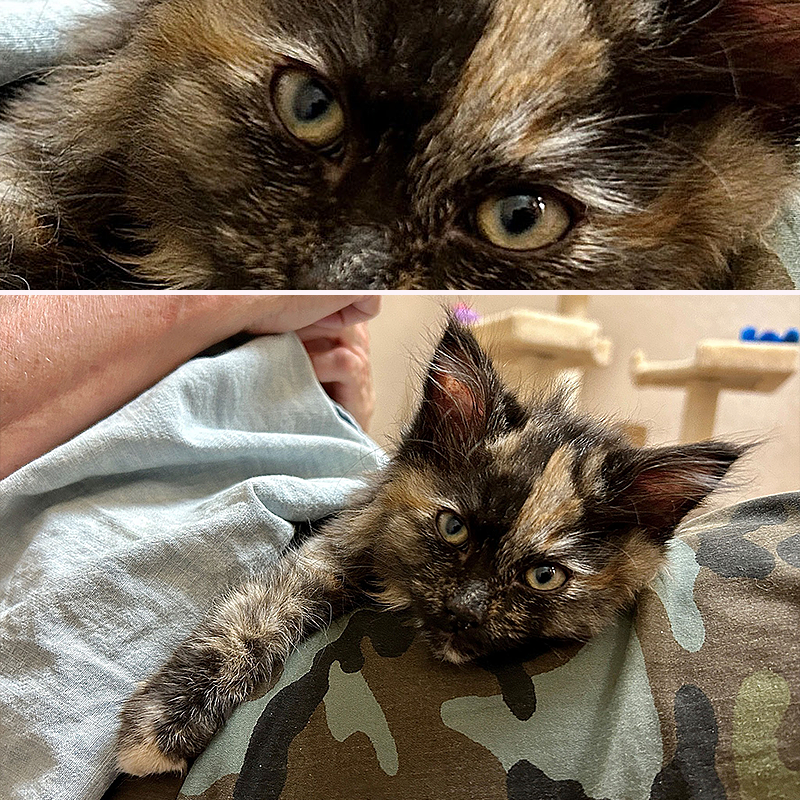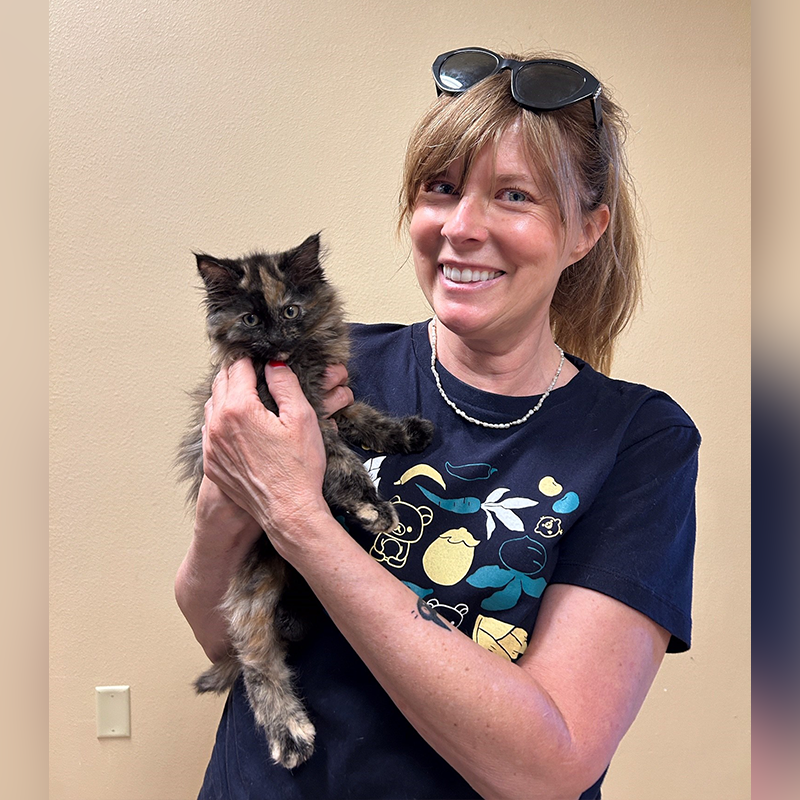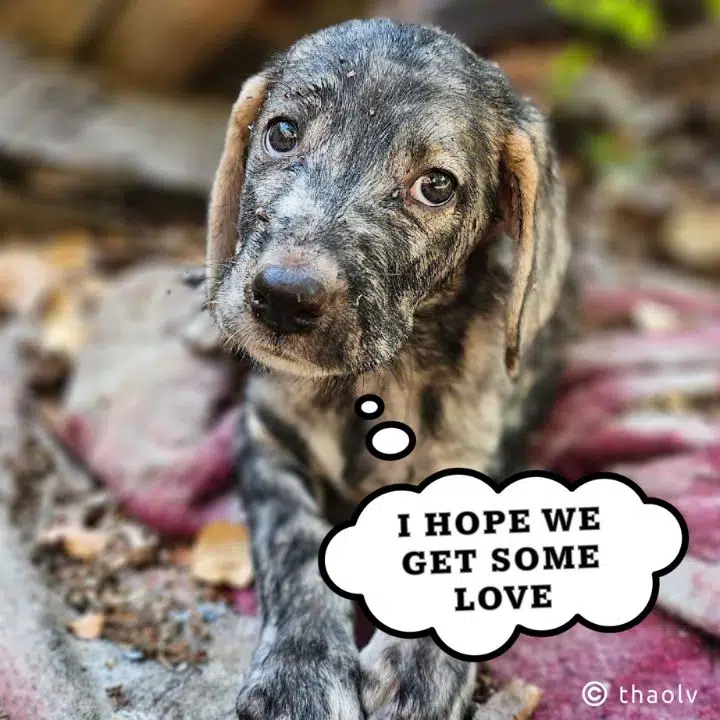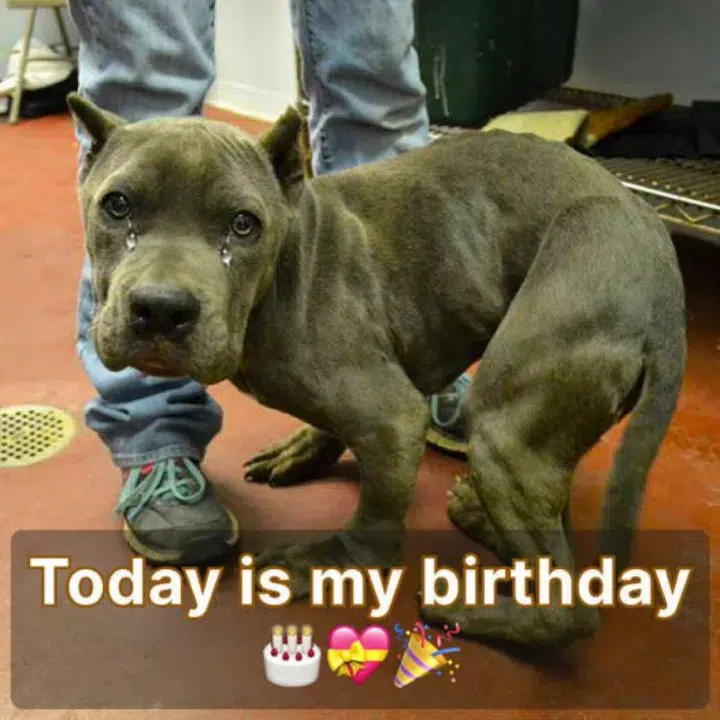We love seeing unusual cats, and they often get lots of attention for what makes them unique. Frequently, shelters and rescues encounter ‘unicorn’ cats with a rare coat and eye color. It’s just fun to see, but of course, the rarity has nothing to do with the cats’ worth. All kitties are equally deserving of finding a loving home. But here’s another unicorn that has caught lots of attention in Oregon: a unique intersex cat, both male and female!
Rare Tortoiseshell Kitten Gets Two Names
In late April 2024, someone surrendered a litter of kittens to the Humane Society of Central Oregon (HSCO). Among the litter was a pretty one-pound Tortoiseshell kitten. Since almost all torties are girls, they chose the name Cindi. As we shared before, only about 1 in 3,000 torties is male from a genetic mutation, and they are usually sterile.
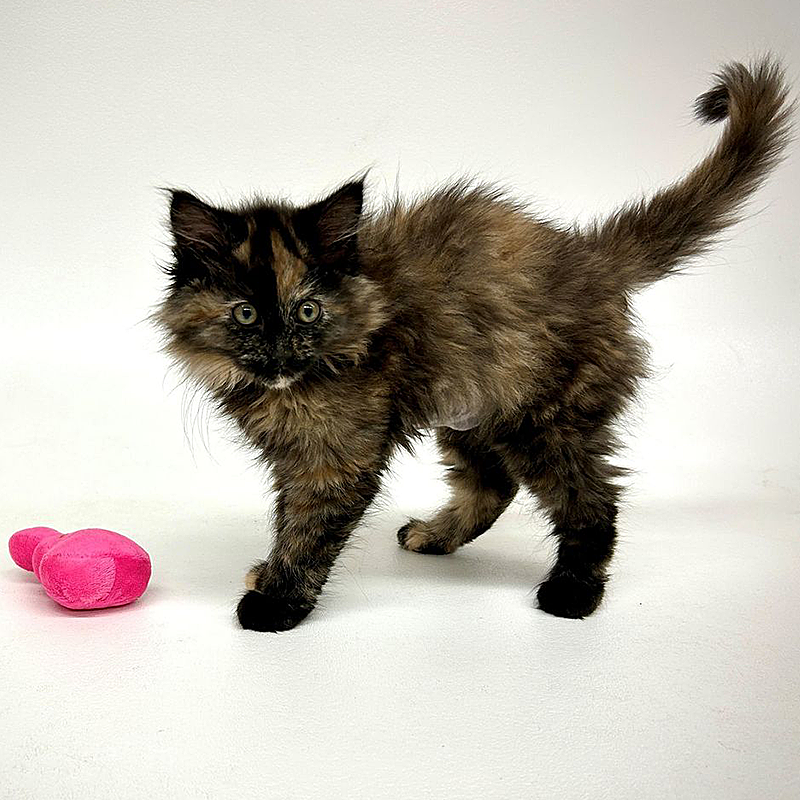
Images via Facebook/Humane Society of Central Oregon,
Like most kittens, Cindi was playful and loving from the start. But the vet soon discovered Cindi was a rare intersex cat during what wasn’t your typical spay surgery.
“Her foster family said she was a typical loving, adventuresome and playful kitten. After five weeks in foster care, Cindi returned for her spay surgery. During the surgery Dr. Bloodworth discovered Cindi did not have a uterus or ovaries. The HSCO veterinary team found and removed two testicles. After the surgery, Cindi was renamed Cinder,” shared the Humane Society.
After doing thousands of such surgeries, the vet had only seen a few like this one.
“Dr. Bloodworth has performed ‘tens of thousands of cat surgeries’ in her shelter medicine career and has only seen one other male calico and only a handful of true [intersex] animals,” the rescue shared.
The Cutest Fluffy Unicorn
Likewise, HSCO’s Clinic Manager, Bailey Shelton, was also surprised by the ‘unicorn’ intersex kitten.
“It was like spotting a unicorn! Even though I’ve only been in the veterinary field for nine years, this very well could be a once-in-a-career moment. They always talked about how rare male Tortoiseshells are back in school, but seeing one in person is something else. You just never know what amazing surprises await you at the humane society!”
As we know, a male Tortoiseshell kitty is rare, but this one is rarer still.
Note: While another word is still used by some, it can be considered derogatory to human beings. Therefore, we have replaced the word with “intersex” out of love and respect for everyone.
Video by KATU News:
Cinder Is Likely to Be XXY
Bloodworth, the Humane Society’s Medical Director, explained that they chose to refer to Cinder as male. We’re certain a kitten won’t care whatsoever, but we will always support using people’s correct pronouns to affirm their identity.
“To call it a male is tough, but with the binary nature of animals and people’s perception of animals, we chose male,” said Bloodworth.
In reality, nature is incredibly complex, which makes life as diverse as a Tortoiseshell cat’s unique coat.
“This kitten is very likely a three-sex chromosome cat XXY. The two X chromosomes allow for the Tortoiseshell coloring, and the Y chromosome allows for the testicles… In the kitten, it did not have a uterus or ovaries, did have testicles and has what looks like a vulva,” explained Dr. Bloodworth, DVM. She continued that if one were to examine Cinder as an adult, they would consider it a female because the external genitalia look profoundly like a female, not to mention the fact that it is a Tortoiseshell cat.”
A Loving Home For Cinder
In a happy update, the HSCO shared that Cinder has quickly found a loving home. It took all of one day for a long-time supporter to adopt the unique kitten! Who wouldn’t love to adopt Cinder?
“Stephanie, the adopter, met Cinder the day of his neuter surgery and fell in love. After thoughtful consideration, the family decided to adopt Cinder. He is being spoiled with new beds, toys, food, treats and lots of love. The family describes Cinder as “funny, quirky and sweet.” They continue to say that Cinder is confident and ‘full of male energy, with a Tortoiseshell attitude.’”
At a routine vet exam in Bend, Oregon, Cinder was the meowdel patient. Happy life to Cinder! For more you can follow and support the Humane Society of Central Oregon on Facebook and Instagram.
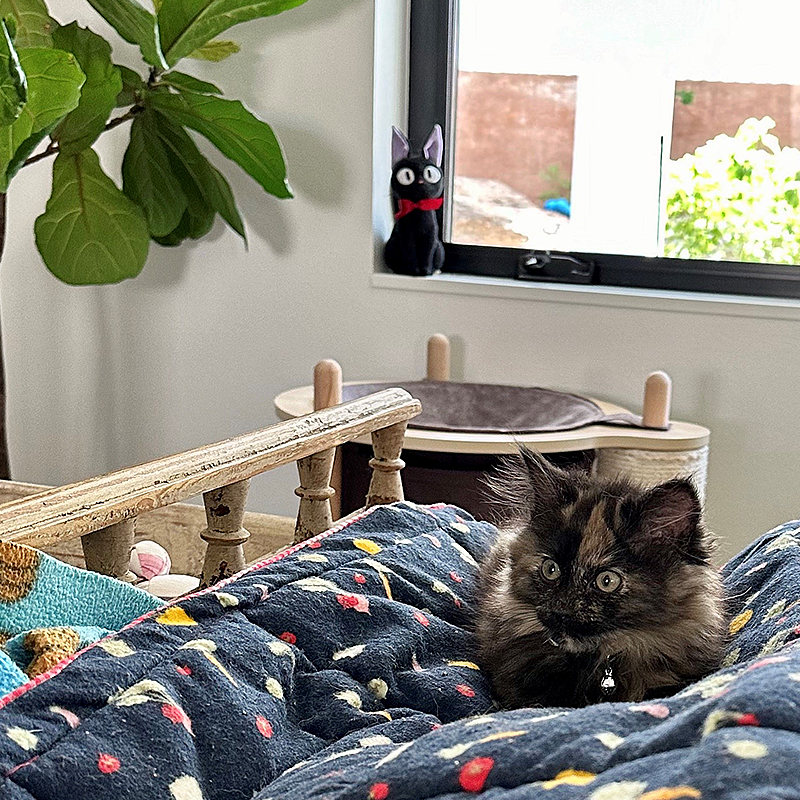
Nonbinary Cats and ‘Feline DSD’
As with chimera cats, sometimes cats and other animals and people have both male and female sexual organs. It can happen with a wide number of different variations in sex chromosomes and cells. An umbrella term for cats sometimes used is Feline DSD.
Examples of ‘Feline DSD’
- Chimerism – chromosomes from different individuals
- Aneuploidy – one or more extra or missing chromosomes
- Polyploidy – two paired sets of the same chromosomes
- Mosaicism – two or more genetically different sets of cells in the body
Although it’s still called Feline DSD, intersex differences are not disorders or a disease. However, the variations can be associated with conditions that cause health issues. About 1.7% of people are intersex, which is about the same number born with red hair. It’s unclear how many cats are born this way.
